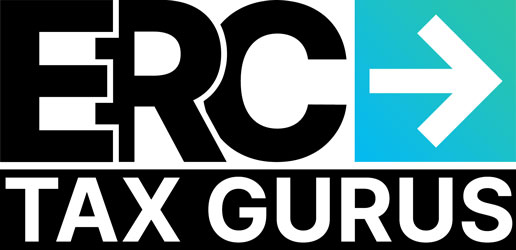Frequently Asked Questions
The ERC related questions we hear the most
What is the ERTC Employee Retention Tax Credit and ERC?
The CARES Act’s Employee Retention Credit is a fully refundable tax credit. For the 2020 program, the ERC is equal to 50% of qualified wages (including allocable qualified health plan expenses) that eligible employers pay their employees. This applies to wages paid after 3/12/2020 and before 1/1/2021. The maximum amount of wages taken into account with respect to each employee for all calendar quarters is $10,000, so that the maximum credit for an employee is $5,000.
For the 2021 program, the credit is increased to 70%, and the limit is $10,000 per quarter. This means the annual maximum for an employee is $26,000.
The tax credit offsets all withheld federal employment taxes including federal income tax withholding, Employer FICA and Medicare. Any excess credit will be refunded or advanced by the IRS.
What is an Eligible Employer?
Eligible Employers for the purposes of the Employee Retention Credit are those that carry on a trade or business during calendar years 2020/2021, including a tax-exempt organization, that either:
- Fully or partially suspends operations by a governmental order, or
- Experiences a significant decline in gross receipts during a calendar quarter when compared to 2019
What Would Make My Business Ineligible?
The only types of businesses that are not eligible to claim the CARES Act and employee retention credit are federal, state, and local government entities. Self-employed individuals are also ineligible for support, but there are nuance requirements that may allow you to claim.
Tribal governments may be eligible. As you navigate through the application process, you’ll learn quickly what you’re eligible for, and how we can assist you.
If you’re still unsure of whether or not you and your business qualify, start gathering your documents. Applying to determine if you qualify is the only way to know for sure. Even if you’re not eligible under the ERC and CARES Act, you might be eligible for another program.
When is the Operation of a Trade or Business Considered Partially Suspended for the ERC?
The operation of a trade or business may be partially suspended if an appropriate governmental authority imposes restrictions upon the business operations by limiting commerce, travel, or group meetings (for commercial, social, religious, or other purposes). This can be a “Stay at Home Order” for non-essential businesses, a capacity restriction, or other possibilities.
Is ERC and ERTC the same thing?
Yes, ERC stands for ‘Employee Retention Credit’, also known as the ERTC ‘Employee Retention Tax Credit.’ This program was created by the Coronavirus Aid and Relief Act in 2020 to help businesses keep employees on their payroll. Both Employee Retention Tax Credits (ERTC) and Employee Retention Credits are refundable tax credits.
What are Qualified Wages?
Qualified wages are compensation provided to employees during an eligible period. An eligible period is either:
- a) the time during which the trade or business is fully or partially suspended by a governmental order, or
b) for 2020, any calendar quarter during which gross receipts are 50% less than the amount received during the same quarter of 2019; for 2021, any calendar quarter during which gross receipts are 20% less than the same quarter of 2019
Doesn't my payroll system/CPA have this information?
Like most economic development business tax incentive programs, the Employee Retention Credit has certain complexities that may impact receiving an accurate, optimized, and audit-ready number. It is important to fully document processes and procedures, organize your records, and avoid any risk areas in advance of a potential IRS audit of the claim, which may come years later.
The ERC has numerous issues such as Controlled Group criteria, documenting qualification methodology, coordination with PPP loans, allocating healthcare expenses to the appropriate time periods, etc. Your payroll company does not have all this information, and your CPA may not have the specific expertise to ask.
The use of ERC specialists can help prevent disaster and/or leaving money “on the table”.
What if I own multiple businesses?
Perhaps the most complicated aspect of the ERC program, separate businesses under common ownership that meet IRS Controlled Group criteria must be evaluated together for eligibility. If the tests are passed, all entities are eligible; if not, none are eligible. The ERC is then calculated and filed for each separately.
How will I "use" a tax credit?
This program is not an “income tax credit” and not related to your annual business tax returns or your profit/loss from the business. Although it is called a tax credit, it is most frequently received as a cash payment from the IRS. You may also use it to offset future payroll tax payments.
Is there a deadline to apply?
The initial analysis to determine your eligibility and approximate credit is completely free. If you file for an ERC with us, our fee is a percentage of the credit to be received.
How much does it cost?
The initial analysis to determine your eligibility and approximate credit is completely free. If you file for an ERC with us, our fee is a percentage of the credit to be received.
Who is eligible for ERC credit?
The ERC is available to any employer—including non-profits, regardless of size—that has experienced either a full or partial shutdown of operations due to a governmental order related to COVID-19, or has experienced a significant decline in gross receipts. A “significant decline in gross receipts” is defined as a decrease of more than 50% when comparing quarterly 2020 receipts to 2019 receipts.
Employers who are part of an affiliated group are only eligible if they meet the above criteria AND the group as a whole has suffered either a shutdown of operations OR a significant decline in gross receipts. For example, if two companies are part of the same parent company and only one company meets the eligibility criteria, the entire group is not eligible for the credit.
How do you qualify for ERC 2023?
There is still time to apply for the ERTC tax credit in 2022. The credit is no longer available for current claims, but you can claim it retroactively by amending your employment tax returns. The IRS lets you amend returns and claim refunds for up to three years after the filing deadline. That means the deadline for claiming the ERTC is three years after the original due date for the tax return.
Is the ERC credit taxable?
The answer is no, but it does impact your income tax return. The benefits of receiving the credit far outweigh its effect on your taxes. There is still time to file if you didn’t apply for ERC on your 2020 and 2021 quarterly payroll tax returns.
Can Any Size Business Apply for Employee Retention Credit?
Can Any Size Business Apply for Employee Retention Credit?
The short answer to this question is “Yes.” Regardless of the size of your business, you can apply for employee retention credit. Whether you run a “trade” or “business” entity, both are seen as the same type of business by the IRS.
The government wants you to be able to keep your employees on the payroll throughout this crisis. If your business has suffered a 50% or more reduction in gross receipts, you can qualify for credit on wages and health care costs.
What is the CARES Act?
The CARES Act is the Coronavirus Aid Relief and Economic Security Act. This $2.2 trillion stimulus bill was passed by President Donald Trump in March of 2020 in order to mitigate the impending impact on businesses under the pandemic.
This fully refundable payroll tax credit applies to many qualified wages that businesses paid to full-time staff between March 13, 2020, and December 31, 2020. The purpose of this act was to ensure businesses could keep their staff on the payroll.
One of the biggest issues for businesses under COVID-19 was mass layoffs. The CARES Act can be claimed immediately so you can keep your employees working, even if your business is being hit hard this decade.
I’m a Tax-Exempt Employer. Do I Qualify For ERC?
Even if you don’t pay taxes, you can qualify for relief. As the purpose of the ERC is to keep people employed, your business’ tax commitment does not exempt you from claiming. If your business was negatively impacted financially by the COVID-19 pandemic, you are almost certainly eligible for support.
How Can My Business Claim the Employee Retention Credit?
Submitting an application for the employee retention credit requires you to gather as much evidence as possible to determine how your business was impacted by COVID-19. Some businesses were stopped from operating altogether during the pandemic.
If you were allowed to remain in operation but your incoming revenue took a big hit, find as much information on your losses as possible. You’ll also need to compare your losses to a normal year of operation. The IRS and government need this information from your business operations in 2019.
Can a closed business apply for ERC?
Yes, businesses that were temporarily closed can apply for the Employee Retention Credit (ERC). The ERC is designed to help businesses keep their employees on the payroll during the COVID-19 pandemic. Eligible employers can receive a refundable credit of up to $5,000 per employee for wages paid.
The IRS has extended the ERC support through to 2024. As there is so much uncertainty about the long and short-term impacts of the pandemic, you can support your employees into the future with security by applying today.
Can I Get ERC Funds If I Already Took the PPP?
Yes. The Taxpayer Certainty and Disaster Tax Relief Act of 2020, enacted December 27, 2020, modified the ERC credit rules. One of the modifications included allowing a company to have a PPP loan and still take advantage of the ERC credit. However, you can’t use the same dollar for dollar funds. We take this into account when processing your ERC credit.
Can I Qualify For The ERC If I Am Self Employed?
No. The CARES Act employee retention tax credit does not just support your business. Though it’s imperative to have employees to help your business flourish, the money is designed to support your employees directly.
Your employees need to keep their homes, feed their families. You can go the extra mile for them by applying for employee retention credit. The payment comes as a cash payment from the IRS.
You can use this cash for your payroll tax payments. Health care support should also be considered. You can claim immediately if you need to, and we’ll help you navigate the process with ease.
How Does It Work?
We make claiming your payroll tax refund faster and easier than anyone else.
Check Eligibility
Answer some questions about your business
File Your Claim
Provide us with some financial documents
Get Your Money
Get your checks in the mail from the US Treasury



